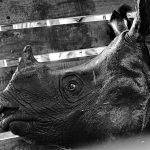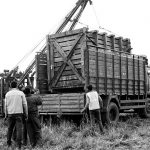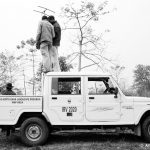- Indian One Horned Rhinoceros, Pobitora WLS, Assam
- Doctors Preparing Tranquilizers, Pobitora WLS, Assam
- Tranquilized Rhino, Pobitora WLS, Assam
- Radio Collar Being Fixed
- Loading of Tranquilized Rhino Into its Crate
- Revived Rhino in Crate
- Crate with Rhino Being Loaded Onto Truck for Transport to Manas
- The Place of Release – Manas National Park
- Rhinos from Pobitora Released in Manas National Park, Assam
- Rhinos Released in Manas National Park, Assam-2
- Post-release Monitoring in Manas
The photo essay above is a chronological documentation of the wild to wild rhino translocations undertaken from Pobitora Wildlife Sanctuary to Manas National Park in Assam under the IRV 2020 program. A complete reportage of the translocation process can be read here.
Indian Rhino Vision 2020 (IRV 2020) is a joint programme of the Department of Environment and Forests – Government of Assam, WWF-India and the International Rhino Foundation (IRF) with support from the Bodoland Territorial Council, US Fish and Wildlife Service and the local communities. The programme’s vision is to increase Assam’s rhino population to 3000 by 2020, which will be done by wild-to-wild translocation from Kaziranga National Park and Pobitora Wildlife Sanctuary to Manas and Dibru Saikhowa National Parks as well as Laokhowa and Burachopari Wildlife Sanctuaries.
Assam accounts for the largest population of Indian rhinoceros. Though rhino numbers in the state have grown from 2000 in 2005 to over 2200 in 2009, more than 90% of these live in just one Protected Area, which is the Kaziranga National Park. The IRV 2020 programme aims to secure the long-term survival of wild rhinos in Assam by expanding their distribution to reduce risks like disease, in-breeding depression and mass mortality.
Under this programme, the first phase of wild-to-wild translocations was carried out in April 2008 when two male rhinos were re-introduced into Manas National Park from Pobitora Wildlife Sanctuary. The current translocations are a part of phase two of the translocations. During this second phase, a total of eighteen rhinos are proposed to be translocated from Pobitora Wildlife Sanctuary and Kaziranga National Park to Manas National Park in batches.











